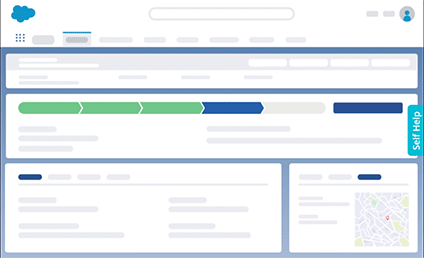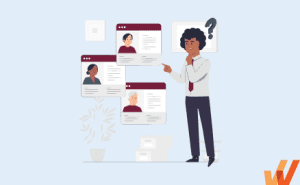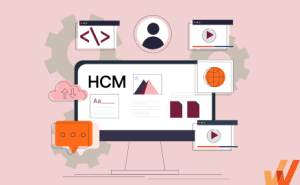7 Common Workday Implementation Challenges in 2024
- Published:
- Updated: July 2, 2024


Implementing Workday, a robust cloud-based enterprise software solution for HR, finance, and other critical functions, is a transformative step for organizations to modernize their HR operations and streamline processes.
However, embarking on a Workday implementation journey is not without its challenges. From complex data migration to customization hurdles and change management, organizations must navigate a range of obstacles to integrate Workday into their business processes.
In this article, we explore the key challenges organizations can expect to encounter during an enterprise Workday implementation and provide insights into strategies to overcome them. Understanding these challenges is essential for organizations seeking to harness the full potential of Workday while minimizing disruptions and ensuring a smooth transition for their workforce.
8 Steps for a Successful Workday Implementation
Implementing Workday successfully requires a well-structured plan and detailed execution. Here is a detailed explanation of the eight essential steps for a successful Workday implementation.
1. Project planning and preparation
The first step is to plan and prepare for the Workday implementation project. The planning phase helps build the structural build of the software implementation plan and helps prepare for pre-implementation checklists and requirements.
- Establish a dedicated project team, including key stakeholders, project managers, subject matter experts, and IT professionals.
- Define the project scope, objectives, timelines, and budget.
- Create a comprehensive project plan that outlines tasks, responsibilities, dependencies, and milestones.
- Outline a change management strategy to ensure your project team and organization as a whole are prepared for any changes that come with implementing a new software.
- Allocate resources and ensure alignment with organizational goals.
A strong project foundation is critical for the success of the implementation.
2. Data migration and integration
Data migration is a vital part of the implementation process. You’ll need to assess and transfer data from your existing systems to Workday. To avoid any challenges while data migration you need to develop a robust data migration strategy to facilitate seamless data flow between systems.
- Include data mapping, extraction, transformation, and validation processes in your data migration strategy.
- Ensure data accuracy, consistency, and security.
- To avoid issues due to potential incompatibilities between your current and Workday’s data format, ensure accurate data entry, avoid duplication, and identify all relevant data points.
- Establish integration points with other systems like payroll, benefits providers, or time tracking systems to ensure seamless data flow between systems.
3. Configuration and customization
Configuration and customization allow organizations to tailor the system to their specific needs and processes. Workday’s flexibility enables businesses to configure workflows, business processes, security roles, and reports to align with their unique HR and financial requirements. This step ensures that Workday is not just a generic software solution but a tailored platform that maximizes its utility and aligns with the organization’s strategic goals.
- Configure Workday by setting up workflows, business processes, security roles, and reports.
- Customize the system to align with your organization’s unique HR and financial processes.
- Define how Workday will handle complex scenarios and exceptions.
- Engage with Workday consultants or experts to make informed configuration decisions.
4. Testing
Comprehensive testing is essential to ensure that Workday functions as intended. This includes various types of testing, such as functional testing, user acceptance testing (UAT), and performance testing.
- Functional testing tools verify that all features work correctly.
- UAT involves end-users in validating the system.
- Performance testing assesses system responsiveness under different loads.
Identify and resolve any issues or bugs that arise during testing to prevent them from impacting the production environment.
5. Training
Develop a robust training program for end-users, including employees, managers, and administrators, to ensure everyone knows how to use the system effectively. Provide training on navigating and utilizing Workday effectively for their specific roles.
A digital adoption platform (DAP) like Whatfix is pivotal in onboarding, training, and supporting your employees during the Workday implementation process by providing comprehensive and interactive guidance and support to end-users.
Whatfix enables end-users with contextual step-by-step walkthroughs, tutorials, and tips within the Workday interface, ensuring end-users can easily navigate and understand the new system’s features and functionalities.
Whatfix’s training modules are tailored to specific roles and tasks, making onboarding and ongoing training efficient and user-centric. Furthermore, it assists in real-time problem-solving by offering in-app support, which is especially valuable during the critical transition period post-implementation.


6. Deployment
Deployment is a pivotal step in Workday implementation as it marks the transition from planning and development to actual use of the system within the organization. Careful planning and execution during deployment ensure that the configured and customized Workday solution is rolled out smoothly to end-users.
- Based on your organization’s readiness and preferences, decide whether to roll out Workday in phases or all at once.
- Ensure that all necessary configurations, data migrations, and testing have been completed successfully.
- Conduct thorough user acceptance testing before transitioning to the production environment.
- Monitor the system closely during the initial weeks after going live to address any issues promptly.
7. Continuous end-user support
Continuous end-user support is a critical step in Workday implementation because it ensures that users have the guidance and assistance they need to navigate the new system effectively. Workday is a complex platform with numerous features, and users may encounter questions or issues as they adapt to it.
Establishing a robust post-implementation support structure, such as a helpdesk or support team, is essential for addressing user queries, resolving problems, and providing timely assistance. Support personnel should be trained and equipped to troubleshoot Workday-related issues, ensuring that users can maximize their productivity without disruptions. Effective end-user support not only enhances user satisfaction but also accelerates the learning curve, driving successful adoption of Workday within the organization.
8. Analyzing adoption and workflow efficiency
Analyzing adoption and workflow efficiency allows organizations to gauge the success of their implementation efforts and identify areas for improvement.
- Collecting feedback from end-users and analyzing system usage data to identify areas for improvement.
- Conducting regular surveys or feedback sessions to gauge user satisfaction and identify pain points.
- Using insights gained from feedback and surveys to optimize Workday processes, enhance the user experience, and maximize the return on investment.
By following these eight steps diligently, organizations can increase their chances of a successful Workday implementation that aligns with their business objectives, enhances operational efficiency, and delivers a positive experience for end-users.
7 Common Workday Implementation Challenges in 2024
Here are the most common workday implementation challenges in 2024.
1. Finding the right implementation partner
Choosing the right deployment partner for Workday can be daunting for companies, as it requires significant time and financial investment. Attempting to carry out the deployment in-house is not a viable option due to the complexity of the reconfigurability element and frequent updates.
While partner firms possess strong functional and technical knowledge of the software, they lack the expertise to understand HR processes and the space in general. What develops is a mismatch between your current HR practices and the default setup in Workday.
Here’s how you can choose your Workday implementation partner
Enterprises either look for an end-to-end implementation partner or a support partner to assist them in a specific phase of the process, specifically for integration.
While scouting for any of the above two, here are some of the major criteria to follow while choosing the perfect Workday implementation partner:
- Your partner must have an in-depth know-how of the entire software along with expertise in the HR/HCM domain.
- A proven track record of successfully carrying out multiple implementations for enterprise clients where the setup, security aspects, and requirements are far more complex.
- Your preferred partner should be on top of all Workday updates starting from the announcement itself.
- Working knowledge of various change management methods and models along with a plan in place that can be applied when necessary rather than having a purely reactive approach when things don’t work out as expected.
- An accessible 24/7 support staff is critical for at least the first 16-18 months of launching the application. An onsite Workday cum HR consultant would also be an added benefit.
2. Existing HR practices and processes
Every organization has a different set of practices regarding payroll, employee benefits, leave management, or any other functions under HR. This is where the problem arises. The default setting in Workday might not match your existing way of running the vertical, which can call for an unexpected requirement to customize the software setup. Unless you’ve accounted for this expense, your budgets must be massively raised to solve this challenge.
Sometimes, even if you’ve budgeted for a surge in costs, the time to go live may get extended due to multiple customizations and frequent testing by creating your scripts. In many cases, the time extension due to this contingency is not included in the plan, leading to a failure to meet deadlines to go live.
A by-product of this situation could be the lack of software competency post-implementation in case you change your practices to match Workday’s default setup.
3. Lack of proper documentation
Workday implementation is a complex process with multiple steps and numerous possible customizations. Because of the complexity, comprehensive documentation is necessary at every point in the procedure. This is handy during testing, future change management, employee onboarding, and employee training.
A crucial element of the documentation process is standard operating procedures (SOP) which elaborates how your company would effectively use Workday and for what use case.
As a shortcut, many companies and implementation partners refer to a generic Workday training and implementation guide for future re-configuration.
Your company might have a different way of and reason for using Workday, which highly influences the implementation & training. Often, the need for proper documentation tailored to your company is a commonly overlooked but expensive challenge for Workday.
A way around this roadblock is to hire a dedicated consultant to manage documentation during the implementation and keep it up to date as and when Workday releases its updates. They would also manage the distribution of this document with relevant stakeholders.
Another possible barrier is the storage or the placement of the documentation. Here, you need to identify where your team would navigate to in order to find assistance. As a recent Gartner-identified category, digital adoption solutions such as Whatfix provide the capability to add these within the Workday application as an overlay or within your organization’s intranet for easy access and delivery.
4. Challenges during the testing phase
The testing phase of Workday implementation presents several challenges such as:
- ensuring comprehensive testing coverage across various functional areas and modules as it requires meticulous planning and execution to identify potential issues.
- data migration and integration testing as it involves validating data accuracy and consistency across multiple systems.
- coordinating user acceptance testing (UAT) involving end-users, due to scheduling constraints and varying levels of technical expertise.
Overcoming these challenges demands thorough planning, skilled testing teams, and effective communication to ensure a smooth and error-free transition to the production environment.
5. Updates during implementation
Workday time to production, for large enterprises, can take about 4-6 months, which is certainly not bad for organizations of that size. However, Workday announces two to three major updates annually. There is a high chance that you might have to accommodate 1 or 2 of these upgrades during or just after the launch. In such a situation, your initial metrics will experience a significant dip, especially if your integrations are still in process.
The implementation project for Workday doesn’t end with achieving go-live on time. However, for many organizations, this becomes the key milestone to achieve, causing a misalignment in the process or when such diversions occur.
This challenge is closely linked to the element of documentation. When major updates are anticipated and documented, it eases out this issue. It also circles back to the planning stage. A well-thought-out change management plan with realistic resource allocation is necessary to be ready for these semi-annual updates.
6. Data migration
Data migration and conversion is a daunting task with any enterprise software. When it comes to Workday, the problem lies with matching your existing data format with that of the application. In this process, a number of issues will be identified that can delay your project:
- Incorrect data and/or missing information
- Duplicated data that needs to be cleaned up
- Data points that might not be recognized in Workday
Let’s take one instance of loading benefits onto Workday from another software – let’s say PeopleSoft.
A common hurdle you will encounter is with regard to loading the event date, coverage date, and hire date for possibly numerous benefits offered to thousands of employees. This is due to how Workday identifies an employee’s eligibility for a particular benefit as well as identifying and loading the closing date for the same.
7. Budget and time constraints
Budget and time constraints represent significant challenges in the Workday implementation process. Organizations often have limited financial resources and strict project timelines, which can impact the scope and depth of the implementation. Striking a balance between achieving all desired configurations, customizations, and data migrations within budget and completing the project on time can be challenging.
Organizations may need to make difficult decisions about prioritizing certain features or phases, potentially leaving some requirements unaddressed. Effective project management, careful resource allocation, and a clear understanding of budget limitations are crucial to navigating these constraints and ensuring a successful Workday implementation that aligns with the organization’s objectives.
8. On-Demand Support
Successful Workday implementation requires dedicated resources to address end-user queries and issues promptly. With employees and stakeholders learning to navigate a new system, questions and problems can arise at any time. Providing timely and effective support can strain existing IT and support teams, leading to delays in issue resolution and potentially impacting user satisfaction.
Organizations need to establish a robust support structure, including helpdesks or support teams, and ensure that support personnel are adequately trained and available to assist users as they adapt to the Workday system. Managing the increased demand for support effectively minimizes disruptions, maintains productivity, and ensures a smoother transition during implementation.
Whatfix digital adoption platform emerges as a crucial asset in maximizing the return on investment for Workday implementations by driving end-user adoption. Its comprehensive and adaptive approach to user guidance simplifies the onboarding process and ensures ongoing user proficiency and productivity.
By providing context-sensitive, in-app support and personalized training, Whatfix empowers users to confidently navigate the Workday platform, mitigating the challenges associated with adoption and change management.
As organizations invest in Workday to enhance their HR and financial operations, Whatfix proves to be the essential bridge that closes the gap between technology potential and user proficiency, ultimately ensuring that organizations can fully harness the benefits of their Workday investment.
To learn more about implementing Whatfix on Workday, schedule a free demo with us today!
Learn more about our Workday implementation and adoption capabilities.
Thank you for subscribing!


